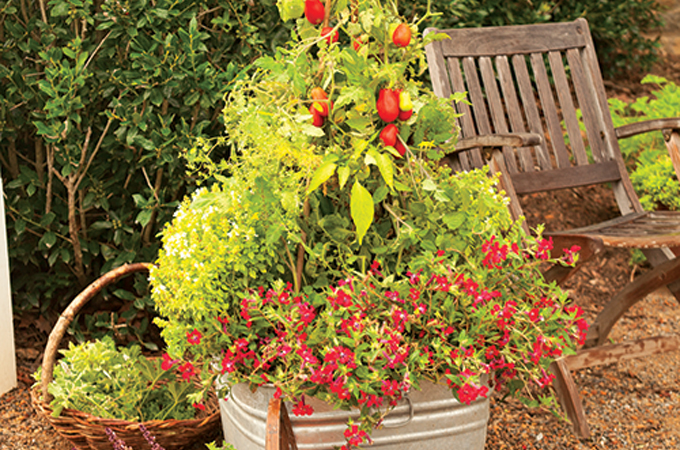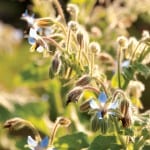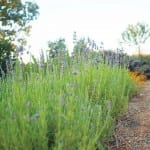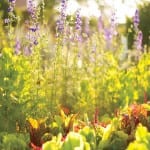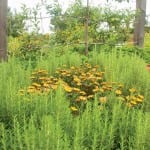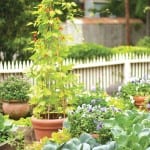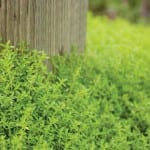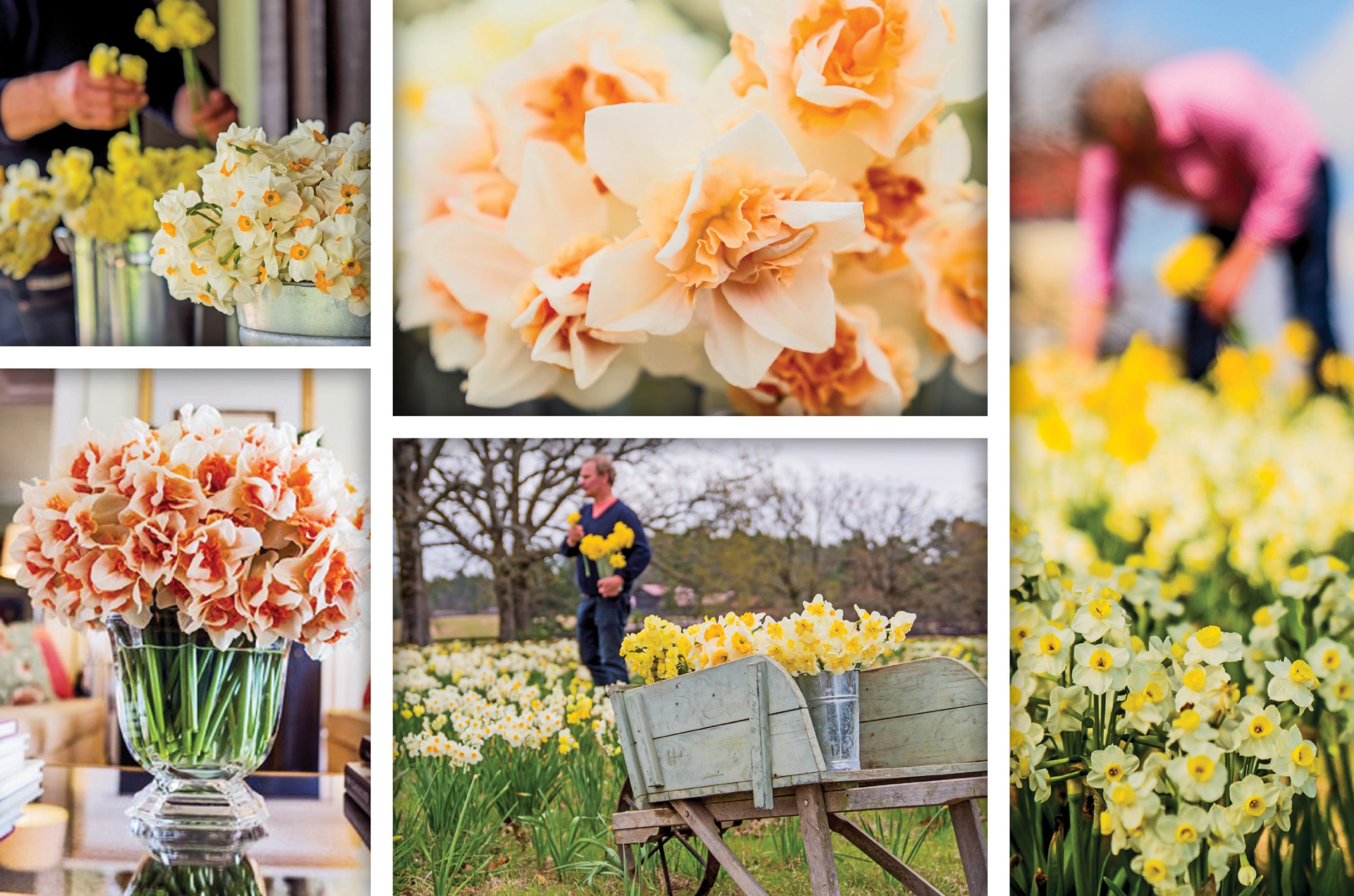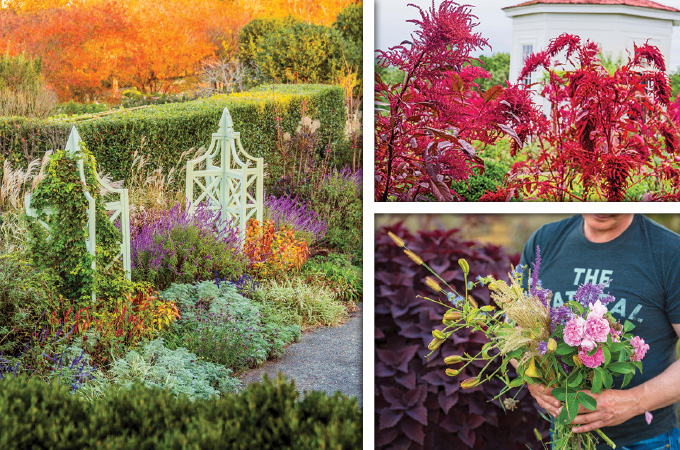Herbs, vegetables and flowers make good ‘bedfellows.’ That’s because most have the same growing requirements: full sun, consistent moisture and good drainage. A garden planted with flowers or vegetables in segregated beds might appear well-planned, but this separation may not make for the most functional or intriguing garden. There are many reasons, both aesthetic and practical, to merge the two worlds. By combining ornamentals and edibles, you’ll maximize your available space and add the unexpected to your garden’s design. As a bonus, many plants actually benefit each other by controlling pests, attracting pollinators and enriching the soil, an arrangement known in gardening circles as companion planting.
If you want to mix and mingle vegetables and flowers with success, just remember to choose plants with the same growing requirements. Typically vegetables require at least six hours of sun each day. There are exceptions, such as lettuce, parsley and spinach, that will tolerate light shade. Vegetables also need well-draining soil and consistent moisture. There is a huge selection of blooming plants that like full sun, as well, and benefit from a similar watering routine as their edible companions. But always check the plant tags to make sure. Both fruiting and flowering plants need a lot of nutrients to thrive. Since you are going to eat some of what you’re growing, use an organic fertilizer and avoid chemical pest controls.
Edibles in containers couldn’t be more popular this season, but why not mix in flowers, too?
« Pick containers for functionality as well as beauty. Make sure the containers have adequate drainage and are made of materials free from chemicals that could leach into your edibles.
« Select your plants. Many herbs, vegetables and flowers do well in containers, so be creative with cultivars. Consider the height, abundance and color combinations.
« Prepare your soil. With the right soil preparation, you will harvest an abundance of fresh herbs, vegetables and blooms. Enrich the soil with compost for optimum nutrition.
« Fertilize and hydrate. Container plants usually require fertilizing and frequent watering. Use an organic liquid fertilizer according to the manufacturer’s instructions and water when the top inch of soil is dry. You may have to water every day during hot, dry weather.
Photos: Jane Colclasure
[P. Allen Smith, host of two public television programs, is an award-winning designer and gardening expert. He is the author of several books, including Seasonal Recipes from the Garden.]





